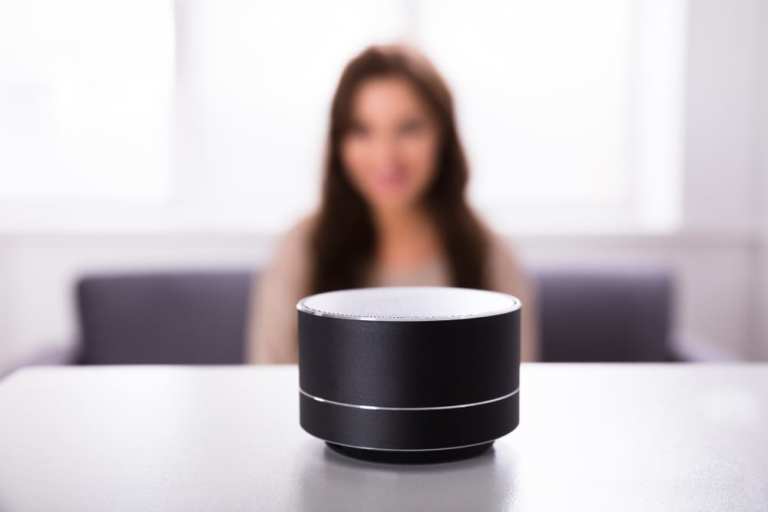Voice assistant technology already had an audience even before the coronavirus outbreak gave it a big boost, as it has now radically reshaped consumer habits and preferences on a global scale.
As far back as late 2019, the second edition the Visa/PYMNTS How We Will Pay study demonstrated that the home and its voice-enabled devices were well on their way to becoming the consumer’s connected commerce command center. That trend was particularly pronounced among older “bridge millennials,” who on average owned six separate connected devices, not counting their phones. Similarly, three out of every 10 consumers reported owning a device embedded with a voice assistant, and roughly one-third of that number (31 percent) reported having used that device to make a purchase.
By the numbers, the trend lines were already leaning toward voice assistant adoption as an enabler of new commerce ecosystems long before the term “global pandemic” became commonly used. But COVID-19 has since sent consumers radically digital across the board, pushing nearly every aspect of their lives – work, entertainment, shopping, etc. – into digital channels.
Several highly desirable demographic swaths plan to stick with those digital versions in the post-pandemic world. According to PYMNTS’ latest consumer data on the subject, 47 percent of millennials have shifted their routines online, while 45.1 percent of bridge millennials have done so. Another 41.8 percent of Generation X consumers have made the switch.
And consumers plan to stick with their new behaviors. Some 31.1 percent of millennials who have moved online to manage their retail lives during the lockdown said they expect to at least partly continue doing so in the future. Another 30.3 percent of Gen Xers report the same thing, as do 30 percent of bridge millennials.
The digital switchover is also likely to stick longer with affluent consumers than with their peers who have less annual income. According to our survey data, 38.1 percent of all consumers who plan to continue using digital channels as much as they do now earn more than $100,000 annually.
Advertisement: Scroll to Continue
Consumers in the same income bracket also represent 45.8 percent of those who have shifted to conducting their daily activities online, and who plan to partly continue doing so post-pandemic. Conversely, the data show that those in the lowest income bracket (less than $50,000 a year) are the least likely to have made the shift online.
Looking at the overlap between consumers who were already interacting with voice assistants pre-pandemic and those who plan to stick with a radically digital lifestyle post-pandemic, and we start to see the big opportunity for the voice commerce ecosystem. It’s a boost that’s already visible in some consumer data, and in the emerging improvements and extended use cases for voice-enabled commerce technology.
Chatting More Often With AI
Consumers sheltering at home with drastically reduced conversational avenues have started talking to their smart speakers more often. According to a report by NPR and Edison Research, the number of people who are using voice commands at least once a day rose from 46 percent to 52 percent during the pandemic’s early weeks.
The NPR/Edison Smart Audio Report interviewed 1,660 adults between March 31 and April 1, some 20 days after the World Health Organization (WHO) declared COVID-19 a crisis.
A majority of those surveyed (77 percent) said their typical routine had changed because of the outbreak, and almost half said they were now working from home. The report also showed that smart speaker ownership has risen about 4 percent during the era of social distancing, and that smart speakers with screens embedded (like Alexa Show and Google Nest Hub) are rapidly gaining popularity.
In fact, more than half of poll respondents reported having more than one smart speaker in their home, while 30 percent reported having three or more. The most common uses during quarantine remained largely unchanged, with asking for information about the weather or requesting to play music leading the pack.
However, consumers increasingly expanded their usage to transactions (particularly takeout orders in recent weeks). Other common uses included making phone calls, managing schedules and running a person’s smart home technology.
As for why consumers are adopting these devices with such enthusiasm, the report noted the vast majority reported that voice-operated personal assistants make their lives easier to manage. And an increasing share of respondents (41 percent) reported that they wouldn’t want to go back to living without them.
And based on recent reports, it seems those interactions between consumers and voice-activated artificial intelligence (AI) assistants will keep increasing – especially in venues outside the home, as retailers look for ways to make physical retail completely contactless.
Voice AI’s New Role as Retail Clerk?
Could voice AI start to change how physical retail happens? Retail consultant Jan Kniffen thinks so.
He believes that voice AI offers retailers a unique solution to the problem of COVID-19-era customers being worried about standing too close to each other or to staff in physical stores. Voice assistants present a path to offering novel physical retail experiences that seem personalized to the shopper without violating social distancing guidelines or impinging on the consumer’s comfort.
As an example, Kniffen noted that properly oriented AI can tell a shopper whether a particular item is in stock for pickup. Such a system could also offer customers the option to digitally purchase something from their cars without entering the store, and then have the item brought to their trunk at a specific time.
“It can be done – everybody is working on it,” said Kniffen, who serves as CEO of J Rogers Kniffen WWE. “You’re going to start seeing drive-throughs at the mall now … because people want that. They’re not going to want to get out of their cars.”
Well-placed voice AI can enable stores to offer a drive-through experience at nearly any retail location, but voice assistant shopping experiences will feel familiar to consumers. After all, many have already become well-habituated to talking to voice-enabled smart speakers over the past five years or so.
“We’re going to see more of what’s happening now, just done better,” Kniffen predicted.
And recently, there has been evidence of that “done better” mentality spreading across the voice ecosystem, as various platforms have expanded their capabilities. Amazon has updated Alexa to make its speech sound more natural when reading the news. That more realistic voice can help to boost users’ comfort levels as they are talking with Alexa more often.
Combined with the great digitization tsunami currently breaking out across the retail ecosystem, will voice-assisted transactions become the preferred method for truly contactless commerce? Maybe Alexa’s familiar voice is all consumers need to feel comfortable shopping at stores again.




